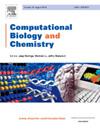SGTB: A graph representation learning model combining transformer and BERT for optimizing gene expression analysis in spatial transcriptomics data
IF 2.6
4区 生物学
Q2 BIOLOGY
引用次数: 0
Abstract
In recent years, spatial transcriptomics (ST) has emerged as an innovative technology that enables the simultaneous acquisition of gene expression information and its spatial distribution at the single-cell or regional level, providing deeper insights into cellular interactions and tissue organization, this technology provides a more holistic view of tissue organization and intercellular dynamics. However, existing methods still face certain limitations in data representation capabilities, making it challenging to fully capture complex spatial dependencies and global features. To address this, this paper proposes an innovative spatial multi-scale graph convolutional network (SGTB) based on large language models, integrating graph convolutional networks (GCN), Transformer, and BERT language models to optimize the representation of spatial transcriptomics data. The Graph Convolutional Network (GCN) employs a multi-layer architecture to extract features from gene expression matrices. Through iterative aggregation of neighborhood information, it captures spatial dependencies among cells and gene co-expression patterns, thereby constructing hierarchical cell embeddings. Subsequently, the model integrates an attention mechanism to assign weights to critical features and leverages Transformer layers to model global relationships, refining the ability of learned representations to reflect variations in spatial patterns. Finally, the model incorporates the BERT language model, mapping cell embeddings into textual inputs to exploit its deep semantic representation capabilities for high-dimensional feature extraction. These features are then fused with the embeddings generated by the Transformer, further optimizing feature learning for spatial transcriptomics data. This approach holds significant application value in improving the accuracy of tasks such as cell type classification and gene regulatory network construction, providing a novel computational framework for deep mining of spatial multi-scale biological data.
SGTB:结合transformer和BERT的图形表示学习模型,用于优化空间转录组学数据中的基因表达分析
近年来,空间转录组学(ST)作为一种创新技术出现,能够同时获取基因表达信息及其在单细胞或区域水平上的空间分布,为细胞相互作用和组织组织提供更深入的见解,该技术提供了更全面的组织组织和细胞间动力学观点。然而,现有的方法在数据表示能力方面仍然存在一定的局限性,难以完全捕获复杂的空间依赖关系和全局特征。为了解决这一问题,本文提出了一种基于大型语言模型的创新空间多尺度图卷积网络(SGTB),集成图卷积网络(GCN)、Transformer和BERT语言模型来优化空间转录组学数据的表示。图卷积网络(GCN)采用多层结构从基因表达矩阵中提取特征。通过邻域信息的迭代聚合,捕获细胞间的空间依赖关系和基因共表达模式,从而构建层次细胞嵌入。随后,该模型集成了一个注意机制,为关键特征分配权重,并利用Transformer层对全局关系进行建模,改进学习表征的能力,以反映空间模式的变化。最后,该模型结合了BERT语言模型,将单元嵌入映射到文本输入中,以利用其深度语义表示能力进行高维特征提取。然后将这些特征与Transformer生成的嵌入融合,进一步优化空间转录组学数据的特征学习。该方法在提高细胞类型分类和基因调控网络构建等任务的准确性方面具有重要的应用价值,为空间多尺度生物数据的深度挖掘提供了一种新的计算框架。
本文章由计算机程序翻译,如有差异,请以英文原文为准。
求助全文
约1分钟内获得全文
求助全文
来源期刊

Computational Biology and Chemistry
生物-计算机:跨学科应用
CiteScore
6.10
自引率
3.20%
发文量
142
审稿时长
24 days
期刊介绍:
Computational Biology and Chemistry publishes original research papers and review articles in all areas of computational life sciences. High quality research contributions with a major computational component in the areas of nucleic acid and protein sequence research, molecular evolution, molecular genetics (functional genomics and proteomics), theory and practice of either biology-specific or chemical-biology-specific modeling, and structural biology of nucleic acids and proteins are particularly welcome. Exceptionally high quality research work in bioinformatics, systems biology, ecology, computational pharmacology, metabolism, biomedical engineering, epidemiology, and statistical genetics will also be considered.
Given their inherent uncertainty, protein modeling and molecular docking studies should be thoroughly validated. In the absence of experimental results for validation, the use of molecular dynamics simulations along with detailed free energy calculations, for example, should be used as complementary techniques to support the major conclusions. Submissions of premature modeling exercises without additional biological insights will not be considered.
Review articles will generally be commissioned by the editors and should not be submitted to the journal without explicit invitation. However prospective authors are welcome to send a brief (one to three pages) synopsis, which will be evaluated by the editors.
 求助内容:
求助内容: 应助结果提醒方式:
应助结果提醒方式:


